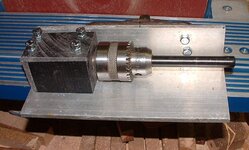I'm beyond frustrated.
Almost every pen I turn has some degree of OOR that I think I can finally attribute to a single source: non-square barrels.
I've read here (and have experienced personally) that the drill-inserted barrel trimmer can ruin a nice blank, but I can't get my belt sander to true up my blanks well enough, even when using a miter gage and fence.
My theory is that this causes the bushing to sit slightly off axis and causes the frustrating wobble I've been experiencing, leading to barrels that are too thick on one side of the tube and too thin on the other.
Please advise!
Almost every pen I turn has some degree of OOR that I think I can finally attribute to a single source: non-square barrels.
I've read here (and have experienced personally) that the drill-inserted barrel trimmer can ruin a nice blank, but I can't get my belt sander to true up my blanks well enough, even when using a miter gage and fence.
My theory is that this causes the bushing to sit slightly off axis and causes the frustrating wobble I've been experiencing, leading to barrels that are too thick on one side of the tube and too thin on the other.
Please advise!

